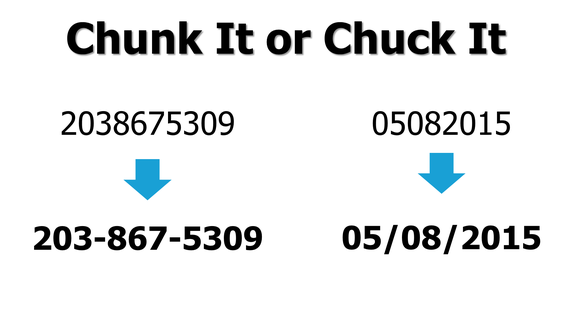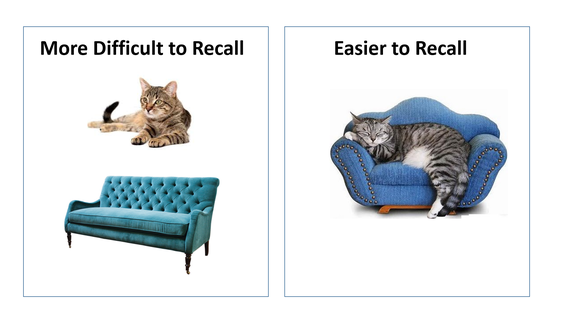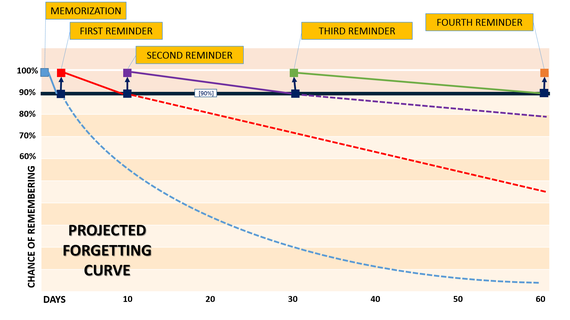Whoever invented the key fob for cars did not design it for women with more than one purse. I feel like I am playing a constant game of hide-and-seek with my keys. Modern technology clearly has many benefits, but for a long time I was certain that the impact on "working memory" was one of the negative side effects, not a positive one.
My husband, on the other hand, insists that my memory has always been shoddy and that I was using technology as an excuse for my poor car-fob maintenance skills. So, to settle this marital debate, I decided to do some research to find out modern technology's impact on memory.
My initial research showed that my side of the argument held some water. The first piece I read stated, "Even a single session of Internet usage can make it more difficult to file away information in your memory." I also discovered the relatively new term "digital dementia," coined by South Korean doctors and further explored by German author Manfred Spitzer. Spitzer compares the effect of overuse of technology to the breakdown in mental abilities that occurs with brain trauma or other psychiatric ailments. Yikes!
But I had to imagine, as with most things as massive in scope as "technology," that the answer couldn't be that simple. There had to be instances where modern technology was in fact being used to improve memory, not the other way around. And for my own sake, I certainly hoped so!
Indeed, Harvard Magazine published a piece that seems to have a more nuanced take: "We still have to remember things ... we're just remembering a different range of things." I buy that: technology now allows us to prioritize different things in our memory.
How Steep is My Forgetting Curve?
I also found out that there is such a thing as a "forgetting curve." This concept was developed as long ago as 1885 by Hermann Ebbinghaus. Ebbinghaus memorized a series of nonsense syllables and then tested his own memory of that nonsense at various time points ranging from 20 minutes to 31 days after the initial memorization. It was a bit of landmark research because it confirmed what we intuitively know: there is exponential loss of memory unless information is reinforced. Put positively, retrieval of any kind enhances and strengthens recall.
There are at least three major concepts that explain how to improve working memory. Moreover, there are several examples of technology that use these reinforcing concepts to improve our memory, not deteriorate it.
Spaced Repetition
Spaced repetition involves re-introducing a concept near the point where it is about to be forgotten; technology can help plant reminders at the times when things are most likely to be forgotten.
In fact, there is a group of neuroscientists who have designed an app that works to measure a person's individual "forgetting curve." It then sends appropriate reminders at the point when users are most likely to forget key information. Great news. I hope it can help me remember the names of my college classmates ahead of my 20-year reunion!
Chunk It or Chuck It
Another concept often included in EdTech programs is that of "chunking." Chunking is a strategy whereby you take a string of multiple items and break them into chunks.
For example, the number 2038675309 is much easier to remember if it is chunked into 203-867-5309. Once you know the term "chunking," you'll begin to see it everywhere: in calendar dates, zip codes, and even in pop song lyrics.

At Istation, the EdTech company where I work, we believe in using chunking to help students learn how to read. Istation uses chunking in teaching children phonics skills in order to build their word analysis (word attack) skills to improve comprehension and fluency. Istation also uses the chunking that happens naturally in music to help students remember songs that teach them new concepts.
Interactive Imagery
A third element where technology gives an advantage is with the memory concept known as "interactive imagery." Basically, if two images are presented separately, they are more easily forgotten than if they are interacting or integrated in some way.
Let's take a cat and a couch as an example. A test group that sees the two images separately (even if the images are on the same page but not connected) is far less likely to recall those two images than the interactive image of the cat sleeping on the couch. Why is that? Well, just as in chunking, the brain perceives it as singular item and can retain it as such. This much easier than retaining two discrete items in memory.

Technology allows for highly visual experiences, which can facilitate interactive images. Within Istation, there are highly visual and interactive elements to every lesson; we use the interactive nature of the program and the visuals to reinforce concepts and aid in retention.
So there is more than just hope; there are in fact working technologies and apps that aid memory. All that said, it is clear that technology is changing what we choose to memorize. Smartphone users need not memorize 20 or more phone numbers anymore. But there are also new ways that help memory and will perhaps help my children learn in new and different ways.
As for the key fob, where is that thing again?


